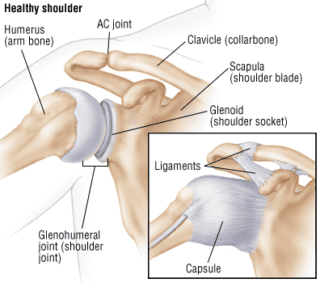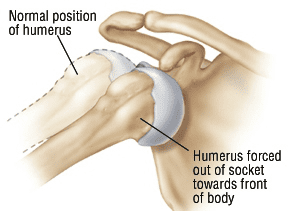Conditions
Medical Conditions We Treat ..
Joints & Bones
Frozen Shoulder (Adhesive Capsulitis)
Bursitis
Dislocated Shoulder
Post Surgical Rehabilitation
Knee Pain
Osteoarthritis
Condramalacia Patella
Joint Stiffness
Neck & Spine
Neck Pain & Stiffness
Spondylitis
Low Back Pain
Sciatica
Degenerative Disc Disease(DDD)
Herniated Discs(Bulging Discs)/Slipped Disc
Spondylosis
Scoliosis
Piriformis Syndrome
Posture problems
Muscles
Spasm
Fibromyalgia
Rotator Cuff Injuries
De Quervain’s tenosynovitis
Trigger Finger
Migraine
Headache
Parkinson’s disease
Guillain-Barré syndrome
Stroke
Bell’s palsy
Transverse myelitis
Motor neuron disease
Spinal cord injury
Multiple sclerosis
Carpal Tunnel Syndrome
Neuropathy
Myopathy
Cerebral palsy
Down’s syndrome
Brachial plexus injury
Foot drop
Joints & Bones
Jumper’s Knee
Patellofemoral Pain Syndrome
Muscles
Muscle Strain & Tear, Cramp
Tennis Elbow
Golfer’s Elbow
Hamstrings Strains
Shin Splints
Soft Tissue
Ankle Sprain
Ligament Injuries
Sprains & Strains
Wrist Sprain
TFCC Injury – Wrist Injury
Plantar Fasciitis
Dislocated Shoulder
The shoulder joint is called a ball-and-socket joint. The ball is the rounded top of the bone in the upper arm (humerus), which fits into the socket — the cup-shaped outer part of the shoulder blade. When the top of the humerus moves out of its usual location in the shoulder joint, the shoulder is said to be dislocated. A related injury called a shoulder subluxation occurs when the top of the humerus is only partially displaced and not totally out of its socket.

Doctors classify shoulder dislocations into three types, depending on the direction of the dislocation:
- Anterior dislocation— The top of the humerus is displaced forward, toward the front of the body. This is the most common type of shoulder dislocation, accounting for more than 95% of cases. In young people, the cause is typically sports-related. In older people, it usually is caused by a fall on an outstretched arm.

- Posterior dislocation— The top of the humerus is displaced toward the back of the body. Posterior dislocations account for 2% to 4% of all shoulder dislocations and are the type most likely to be related to seizures and electric shock. Posterior dislocations also can happen because of a fall on an outstretched arm or a blow to the front of the shoulder.
- Inferior dislocation— The top of the humerus is displaced downward. This type of shoulder dislocation is the rarest, occurring in only one out of every 200 cases. It can be caused by various types of trauma in which the arm is pushed violently downward.
Causes
Almost all shoulder dislocations are related to trauma. Occasionally, the dislocation occurs after ordinarily harmless motions, such as raising an arm or rolling over in bed. In these mysterious cases, the real cause may be that the shoulder ligaments are abnormally loose. Loose ligaments are sometimes due to an inherited condition that can increase a person’s risk of dislocation in other body joints as well.
Shoulder dislocations are the most common joint dislocation seen by emergency room doctors, accounting for more than 50% of all dislocations treated in hospitals. Young adult men and older women tend to be the groups with the highest rate of shoulder dislocations.
Symptoms
Symptoms of a dislocated shoulder include:
- Severe shoulder pain
- Limited motion of the shoulder
- A distortion in the contour of the shoulder — In an anterior dislocation, the side silhouette of the shoulder has an abnormal squared-off appearance instead of its typical sloping, rounded contour. In a posterior dislocation, the front of the shoulder may look abnormally flat.
- A hard knob under the skin near the shoulder — This knob is the top of the humerus that has popped out of its socket.
- Shoulder bruising or abrasions if an impact has caused your injury
Diagnosis
The doctor will examine both shoulders, comparing your injured shoulder with your uninjured one. The doctor will check for swelling, shape changes, abrasions, bruising, pain when you move, tenderness and limited motion at the shoulder joint. The doctor will gently press and feel the area around your shoulder to locate the displaced head of the humerus under the skin. In addition, because many important blood vessels and nerves travel through your shoulder area, your doctor will check the strength of the pulses at your wrist and elbow and check your muscle strength and your response to touch on your arm, hand and fingers. In particular, your doctor will look for numbness on the outside of your upper arm, a sign of injury to the axillary nerve, which is vulnerable to injury in a shoulder dislocation.
If the results of your physical examination suggest that that you have a dislocated shoulder, your doctor will order shoulder X-rays to confirm the diagnosis.
